India's badminton scene, once brimming with promise, is now grappling with a significant downturn. After a decade and a half of consistent success, the sport is facing a concerning decline, marked by recent poor performances and a lack of clear successors to iconic players.
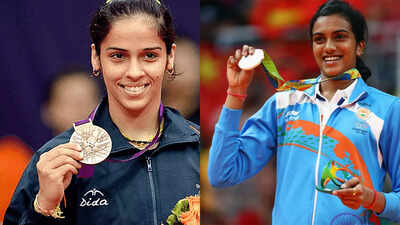
The golden era, defined by Saina Nehwal and PV Sindhu, seems to be fading. Nehwal, a pioneering figure now 35, and Sindhu, a 29-year-old double Olympic medalist, are struggling to maintain their dominance. The transition to a new generation is proving to be a major challenge.
The contrast is stark. India once celebrated three consecutive Olympic medals in women’s singles, conquered the Thomas Cup in 2022, and secured its first Asian Games men’s doubles gold in 2023. Today, the nation finds itself without a single player in the semifinals of the All England Open in 2025.
Satwiksairaj Rankireddy and Chirag Shetty, along with Lakshya Sen, are among the few exceptions to this decline. The consistency of veterans like Kidambi Srikanth, Sai Praneeth, and HS Prannoy appears to be a thing of the past.
A worrying trend has emerged since HS Prannoy’s Malaysia Open Super-500 title in January 2023: a lack of singles titles. Only the doubles team of Satwik-Chirag has managed to secure victories. India's performance at the Sudirman Cup earlier this year was particularly disappointing, with the team exiting in the group stage after losing to Denmark and Indonesia.
The last decade witnessed a surge in Indian badminton. Following Saina Nehwal's Olympic bronze in 2012, PV Sindhu's emergence with a World Championships bronze in 2013 further fueled the sport's rise. Parupalli Kashyap, Kidambi Srikanth, Prannoy, and B Sai Praneeth also gained prominence in the men’s division. Srikanth reached the World No. 1 ranking and secured four Super Series titles in 2017. Sindhu became world champion in 2019, and Sai Praneeth won a bronze at the World Championships that same year.
Srikanth's recent final appearance at the Malaysia Masters offered a glimpse of his former glory, although his low ranking has hindered his entry into subsequent tournaments. The Satwik-Chirag pair, after their dominant performance at the Commonwealth Games, are now grappling with fitness issues. Lakshya Sen carries the burden of leading the men’s singles charge.
While Sen has shown promise, including reaching the All England final and winning a bronze at the World Championships, he is yet to secure a Super-750 or Super-1000 title. Beyond Sen, the talent pool appears thin. The women’s scene is even more concerning, with no clear frontrunner to lead the Indian challenge. While Malvika Bansod, Aakarshi Kashyap, Unnati Hooda, Anmol Kharb, and Tanvi Patri are striving to fill the void left by Saina and Sindhu, they are far from matching the standards set by their predecessors.
Pullela Gopichand, who took over as chief coach in 2006, aimed to transform the Indian team into a formidable force. While he achieved initial success, including Saina Nehwal's historic Olympic medal, the current decline suggests systemic issues. One potential factor is the lack of a robust feeder system to consistently produce high-caliber players, unlike the systems in China or Malaysia. Although Saina and Sindhu inspired many to take up badminton, there is a shortage of trained coaches to nurture these aspiring players.
A more structured approach is needed, focusing on identifying and grooming a core group of emerging players, dividing them into elite and developing groups to foster competition. Talents like Malvika, Aakarshi, and Tanvi could benefit from centralized training. However, a lack of foresight has widened the gap between elite and emerging players, leaving the latter without adequate competition exposure.
While the national association may disagree, there's a lack of support for promising junior players nationwide. Sanjay Mishra, Secretary of the Badminton Association of India (BAI), acknowledged that progress has been slower than expected.
Mishra stated that the BAI is focused on improving coaching, injury management, and talent development. He also mentioned the National Centre of Excellence's efforts to nurture the next generation of champions.
BAI's recent annual general meeting (AGM) unveiled a substantial plan to boost badminton's growth, with a focus on grooming coaches. A tiered system of coaches is needed: the first tier to identify talent, the second to guide players through formative years, and the third to develop international-level athletes.
BAI has allocated funds to support Olympians and former international players who are now coaching, but more comprehensive training programs are essential. Talent identification and development must be prioritized, with a focus on recruiting and training more qualified coaches.
While the current results cannot be undone, BAI must implement a comprehensive system with a clear three-to-five-year plan to revitalize Indian badminton. A unified approach between the association and coaches is needed to manage the tournament schedules of top players, especially during Olympic and Asian Games years.
Drawing inspiration from Pullela Gopichand's successful model, a similar system could be implemented across the country. With abundant talent available, a proper system must be established promptly to prevent Indian badminton from sinking into mediocrity.
Newer articles
Older articles
 Moto G54 Gets Significant Price Cut in India, Making Budget Smartphone Even More Appealing
Moto G54 Gets Significant Price Cut in India, Making Budget Smartphone Even More Appealing
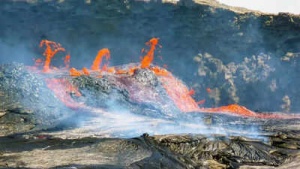 Africa's Rift Valley: Mantle Upwelling Drives Continent's Split and Birth of New Ocean
Africa's Rift Valley: Mantle Upwelling Drives Continent's Split and Birth of New Ocean
 X Cracks Down: Over Half a Million Indian Accounts Suspended for Policy Breaches
X Cracks Down: Over Half a Million Indian Accounts Suspended for Policy Breaches
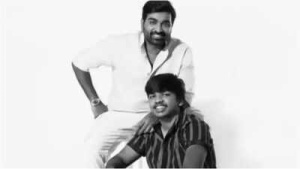 Vijay Sethupathi Apologizes Amid Controversy Over Son Surya's Debut Film 'Phoenix'
Vijay Sethupathi Apologizes Amid Controversy Over Son Surya's Debut Film 'Phoenix'
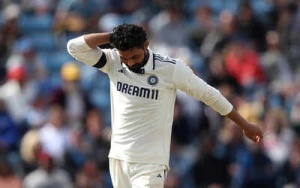 Jadeja's Accuracy Questioned: Ex-India Pacer Slams Spin Strategy in England Test Loss
Jadeja's Accuracy Questioned: Ex-India Pacer Slams Spin Strategy in England Test Loss
 IRCTC's AI Chatbot Revolutionizes Train Ticket Booking, Refunds, and Information Access
IRCTC's AI Chatbot Revolutionizes Train Ticket Booking, Refunds, and Information Access
 Ashada Gupt Navratri 2025: Unveiling Dates, Sacred Rituals & Hidden Significance of the Monsoon Festival
Ashada Gupt Navratri 2025: Unveiling Dates, Sacred Rituals & Hidden Significance of the Monsoon Festival
 Google Maps Enhances Directional Accuracy with Fused Orientation Provider Update
Google Maps Enhances Directional Accuracy with Fused Orientation Provider Update
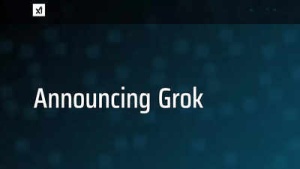 xAI to Open Source Grok, Democratizing Access to Musk's AI Chatbot
xAI to Open Source Grok, Democratizing Access to Musk's AI Chatbot
 Android Users Urged to Patch Now: Critical Security Flaws Expose Devices to Attacks
Android Users Urged to Patch Now: Critical Security Flaws Expose Devices to Attacks